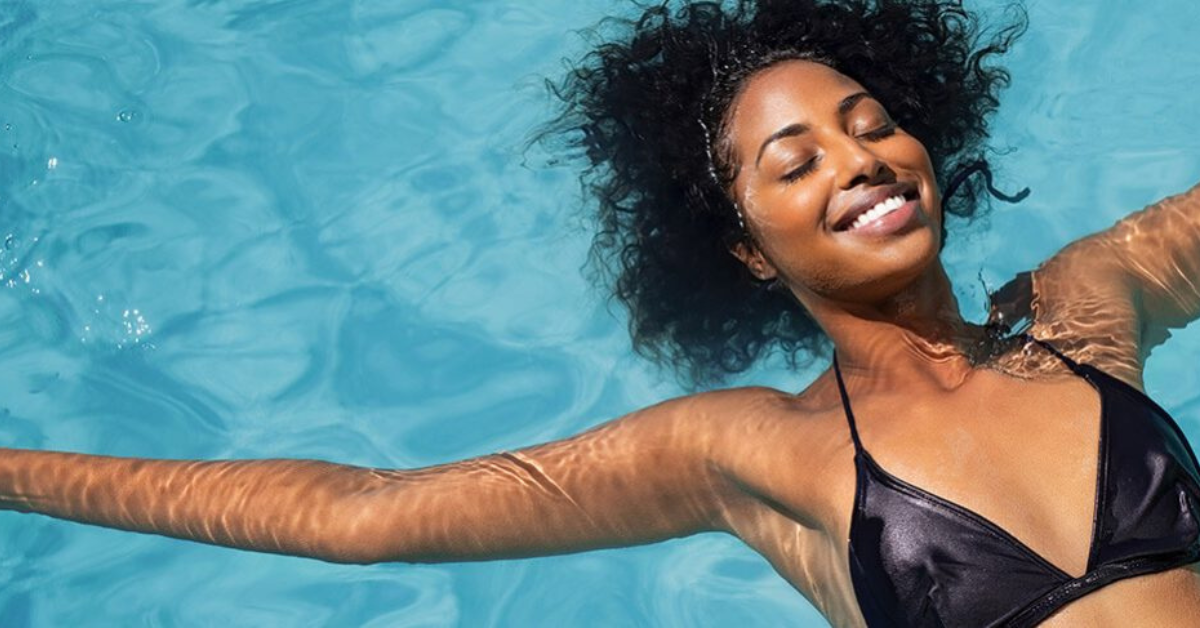Would you believe it if I told you that I couldn't swim to save my life just a few weeks back, and now I can do freestyle, backstroke, and breaststroke like a pro? Swimming is easy. Well, it's easier if you know what you're supposed to do.
For a long time, I would go swimming and play around with the water. For some reason, we don't ask the person who can swim next to us to teach us because, I guess, we can't trust strangers with our lives. There's a fear of drowning every non swimmer has. That panic when you feel the water rushing over you and you start to flail your arms around but can't seem to get a grip on anything. Your feet. Your hands. Your body. It's just not doing what it should.
Well, don't worry. I've prepared a quick guide to try out the next time you're at the pool. It's easy steps you can take mental note of, and I guarantee will get you to the pro level in no time.
Why Floating is Important
Before doing anything fancy, the first thing you want to perfect is floating in the water. Floating helps to keep you calm in the water. It also helps to reduce fatigue because while swimming can be tiring, floating uses no energy at all. You can float for as long as you want while on your back, which can help you if you happen to sink and have to wait for help to come. It happens. You’d be surprised to know some professional swimmers can get disoriented while swimming, so they float to regain balance.
How to Float on Your Stomach
So, let’s start with floating on your stomach. First, you want to get into the pool at the shallow end. Then, with your arms and legs spread out like a star, breathe in and push yourself into the water, your palms facing down. Look down at the bottom of the pool, and slowly allow your body to relax.
Breathing in air before floating helps with buoyancy and, of course, avoiding water going up your nose.
Make sure your eyes are looking directly at the bottom of the pool, which means your head will be partially submerged in the water. As you straighten your spine, you’ll start to feel the water lift you, starting with your hips and finally your legs. Easy right?
How to Float on Your Back
Okay. Now let’s do floating on your back. It’s the same as floating on your stomach but in reverse. So, with your arms and legs spread out like a star, slowly turn your back toward the water and relax.
For the first try, breathe in to avoid water going up your nose. If you relax and trust the water, your body will easily float on the surface of the water.
To dismount, breathe in, then bend your knees the same way you do when you sit down and tuck your chin inside the water. Use your arms to sweep the water back up and slowly come into a standing position.
The Streamline Position
Streamline floating is vital to learning the easiest swimming style, freestyle, depending on who you ask, and occasionally, breaststroke. When you float in the streamlined position, you move through the water while you float!
So, to get that locked in, first, stretch out your arms before you. Make sure to keep your arms straight, always. Press your arms against your ears. Then, put one palm over the other while keeping your fingers together.
Your legs should also be straight and close together. Try not to leave any gap between your legs. In short, your entire body should be straight. Try not to bend your back.
When you’re ready, push yourself into the water. As you push yourself into the water, remember to look directly at the bottom of the pool. Don't lift your head. Always look down.
You also should open your eyes to see where you're going. If the chlorine in the water hurts your eyes, consider buying swimming goggles that are pretty effective in preventing water from getting into your eyes.
If you feel yourself losing balance, make sure to remain calm and allow the water to lift you and balance your body on its surface. Swimming is about trusting the water to behave like it should. Just like a leaf floats in water, trust that your body, too, will float at the straight body position.
You can ask a friend to help you. Or you can do it yourself at the shallow end. Don't worry. You're not going to drown. If you lose balance, don't panic. Slowly use your feet to reach for the ground and try again.
Resources to Help You Get Better
Keep a lookout for updates on freestyle, backstroke, and breaststroke swimming styles. I'll also cover treading, which is how you can pass the time at the deep end without using too much energy. Also, I’ll update more advanced techniques like the butterfly with time. There are levels to swimming, with always something new to learn.
Meanwhile, you can follow Swimgym on Instagram. They have useful slow-motion videos to help you identify any mistakes you’re making and patch them out. And, as always, let me know of any questions or concerns you may have via email at joycegicheha.writer@gmail.com.

